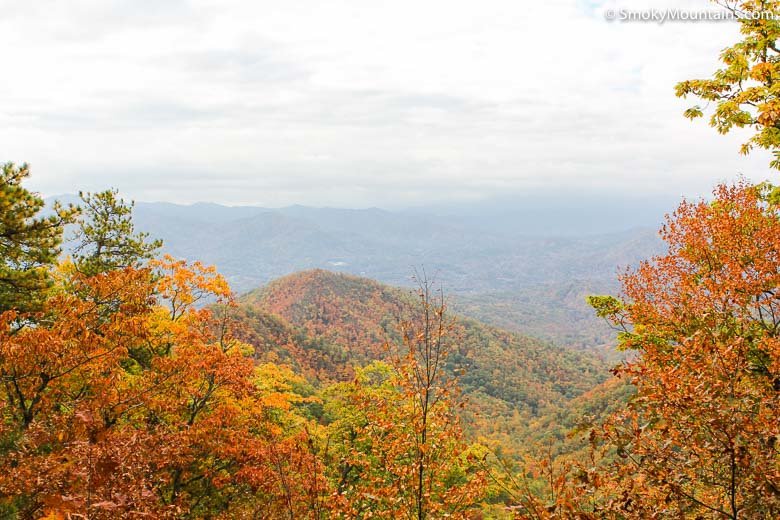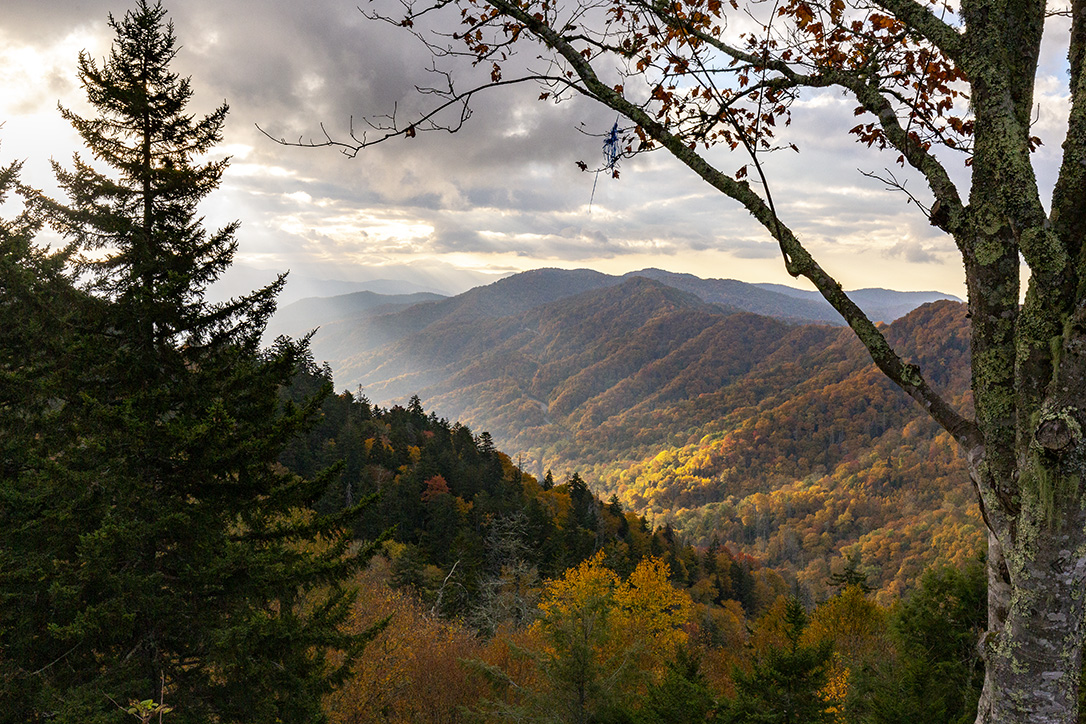The Smoky Mountains are one of America’s most beloved destinations. These beautiful rolling hills feature abundant evergreens and deciduous trees, rolling blue hills that always look like they’ve got that smoky glow, and staggeringly beautiful sunsets year round.
Great Smoky Mountains National Park was established in 1934, setting aside more than 520,000 acres for wildlife preservation and outdoor recreation. This park now sees more than 14 million visitors a year, and it is the most visited national park in America.
However, the park doesn’t account for the entirety of the Smoky Mountains range. Running through it are towns, cities, and roads along which people travel to see some of the most noteworthy destinations in Tennessee and North Carolina. And as the Smokies are part of the broader Appalachian Range, which extends 1,500 miles from Canada down to Alabama, you’ll have no end of mountainy goodness.
Naturally, there are better and worse times of year to visit any place, and the Smoky Mountains are no exception. Let’s take a look at the pros and cons of each season to find the best times to visit.
Summer

The Great Smoky Mountains are lush and steaming in the summer. The forests take on an almost jungle-like feel, with buzzing cicadas, croaking frogs, and the not-so-occasional deer sighting to liven things up. It’s a fantastic time to visit.
PROS
Summertime is bright and vibrant. You’ll see jeweled butterflies, colorful lizards, and if you’re lucky, the majestic Luna moth. While spring flowers have faded, you’ll enjoy summer wildflower meadows and a thousand variations of the shade of green.
Summer is also when a ton of other tourist amenities are in high swing. Water parks, amusement parks, and roadside farmstands all offer a wealth of fun activities to round out your Great Smoky Mountains vacation.
CONS
Summer is sweaty. Like, very sweaty. It’s not that the Smokies are necessarily that hot; the average summer temperature hovers in the 70s or 80s. It’s the humidity, which hovers in the mid-70s all summer and makes it feel pretty sticky when hiking or otherwise exerting yourself. If you’re only made for the shade, you might want to visit at another time of year.
Fall

Smoky Mountains National Park, Tennessee, USA autumn landscape at Newfound Gap.
Autumn in the Smokies is absolutely beautiful. This area contains a whole wilderness of deciduous tree species – those that lose their leaves in the winter. About 80 percent of the trees in the park, in fact, are deciduous, which means their leaves change color to some extent before they fall.
This makes it probably the best time to visit the Great Smoky Mountains National Park. If you love a glowing fireworks display of orange, yellow, and scarlet, then this is the time of year to come.
PROS
Many people consider this area of the world the best place to see leaves in the entire United States. It easily competes with other popular spots, such as Maine or New Hampshire, and is more accessible to many folks.
The pros are pretty clear: abundant photograph opportunities, glorious hikes, and that snappy fall weather that makes it a pleasure to pull on a flannel shirt. Plan for hot apple cider, autumn festivals in the area, lots of pumpkins, and spiced everything.
CONS
The cons? Everyone else is preparing for such things too. The Great Smoky Mountains draw tons of “leafers” or “leaf peepers” in for the season, all of them eager to hike, drive, and avail themselves of the fall fun. This can make it feel a bit crowded this time of year.
Winter

Summit of Smoky Mountains with pine or fir trees covered in snow in early spring and fence with restroom sign
Winter in the Smokies is cold, but it sees its fair share of blue skies and snow, making it a winter wonderland to which many people love to return year after year. Although lower elevations only see snow a few times a year – to the tune of an inch or so – the higher peaks and gaps get several feet every season.
PROS
If you’re celebrating the holidays away from home, this is an excellent place to head due to the variety of celebrations in the area. The Smokies do it right during December, when towns and amusement parks festoon lights and snowflakes every which-a-where.
Don’t care about the holidays? Winter is still an amazing time to come. Peak snowfall occurs in January and February, and hikes at higher elevations take on a constant coat of snow that makes everything magical.
CONS
Of all seasons, wintertime is the most likely to derail your flying and driving plans due to weather. If you’re going to travel this time of year, plan for plans to change and have a backup in place.
Spring

Who doesn’t love the mountains in spring? The fresh breezes, blossoming fruit trees, and bright bulbs scattered across the damp, dark forest ground are all excellent ways to greet a new year of green and growing things. You’ll just want to make sure to hit the trails at the right time of the season.
PROS
Spring is an amazing season to visit if you time it right. March through May are some of the lowest-traffic times of year, but temperatures are warming and the bulbs are starting to burst through the ground by February. Ideally, you’ll wait until April or May, when the sun has a little more warmth and a variety of flowers are in bloom.
CONS
Spring can be boring if you come at the very beginning of the season when nothing is happening. Also, watch out for dangers such as flash floods.
The Takeaway: Best and Worst Seasons to Visit the Smoky Mountains
The truth is, there’s really no “bad” time to visit the Smokies. However, given how spectacular the scenery can be, it does seem like a bit of a shame to visit outside the prettiest times of year.
In general, that includes fall leaf season, the height of summer, the middle of spring, and the holidays. Now that you know when the best times are, you’ll have an easier time planning trips in the future, saving money, and getting the most out of your vacations.
Don’t wait any longer to plan a trip to the lovely Smoky Mountains!




